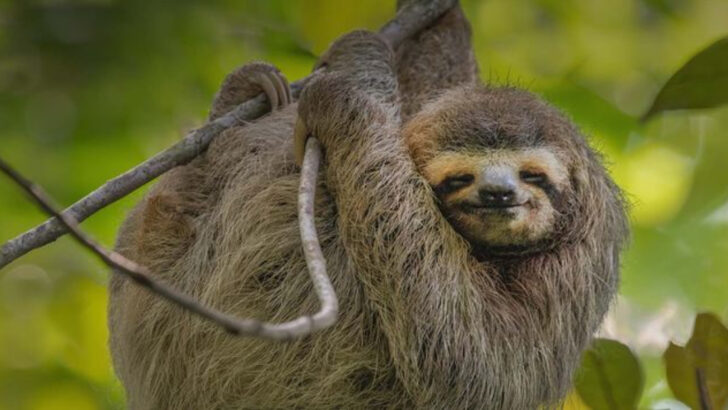South America doesn’t do boring. It does jaguars, giant river otters, and glow-in-the-dark frogs.
This continent is nature on full blast—loud, bold, and totally untamed.
Where else can you find a bird that screams like a howler monkey, a fish that eats fruit, or a mammal that swims better than it walks?
From the Amazon’s steamy chaos to the icy slopes of Patagonia, South America is stacked with creatures that look like they crawled out of a dream—or a very intense biology class.
These 19 animals don’t just live here—they own it. Each one is a reminder that when it comes to raw, wild power, South America doesn’t just show up.
It steals the whole show.
Jaguar
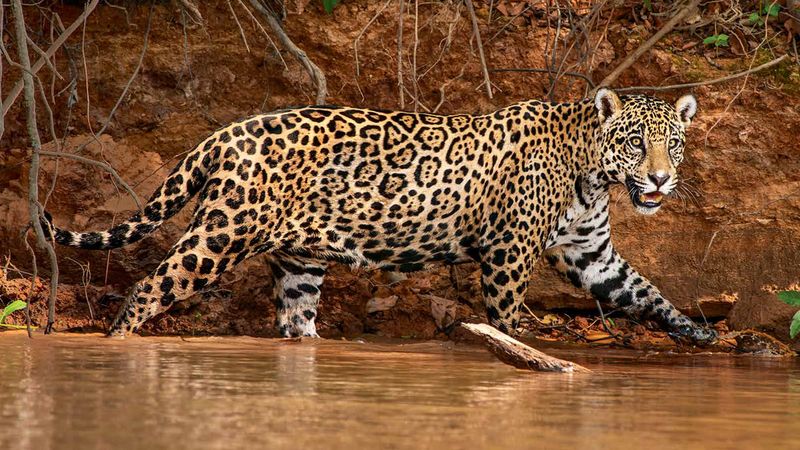
The majestic jaguar, with its striking spotted coat, is the apex predator of the Amazon. Its presence commands respect, as it stealthily navigates through the dense foliage. Jaguars are known for their strength and agility, able to take down prey much larger than themselves.
With a bite force that surpasses other big cats, jaguars can crush bones effortlessly. They play a crucial role in maintaining the balance of the ecosystem by controlling prey populations.
Despite their power, these solitary creatures are elusive, often glimpsed only by the most fortunate explorers. Jaguars truly embody the wild spirit of South America.
Capybara
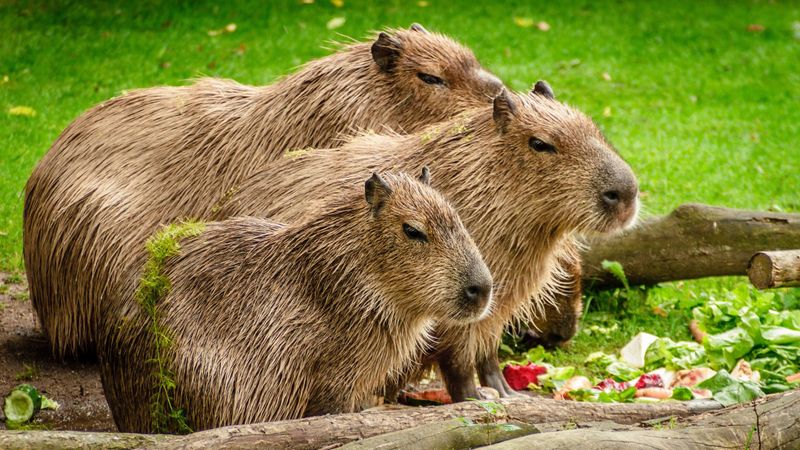
Imagine a creature that embodies the term ‘chill.’ The capybara, the world’s largest rodent, is a genial giant found near water bodies across South America. Their easygoing nature and sociability make them a favorite among animal enthusiasts.
Capybaras are often seen lounging in the sun or taking a dip in the water, seemingly without a care in the world. They live in groups, which helps protect them from predators.
These semi-aquatic mammals are integral to their habitats, contributing to the biodiversity of the region. Their presence is a reminder of nature’s gentle side.
Andean Condor
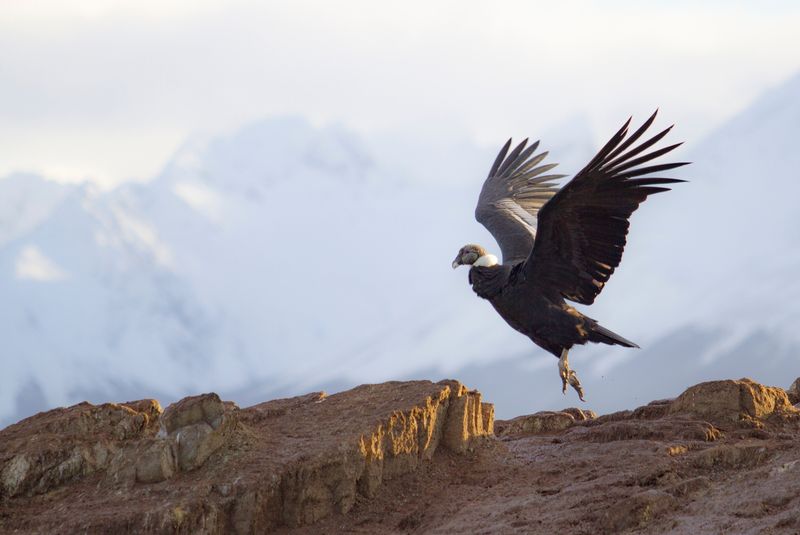
The Andean condor, a symbol of power and freedom, soars majestically over the towering Andes. With the largest wingspan of any land bird, it rules the skies with grace and authority. This iconic bird is revered in many South American cultures.
While condors are primarily scavengers, their presence is vital for the ecosystem, as they help in the decomposition process. Observing an Andean condor in flight is an awe-inspiring experience, a testament to the grandeur of nature.
Their conservation status reminds us of the delicate balance between wildlife and human activity.
Blue Poison Dart Frog
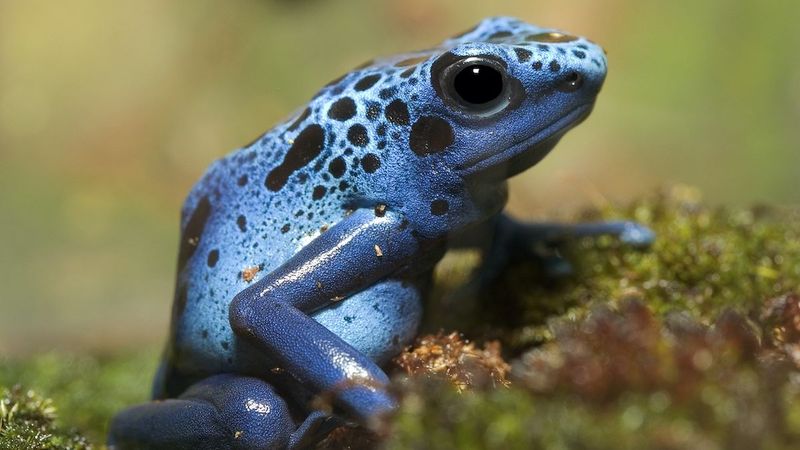
In the lush rainforests, the tiny blue poison dart frog stands out with its vibrant hue. Despite its size, this amphibian is a powerhouse of color and toxicity, a natural defense against predators.
The indigenous tribes have used their poison for hunting, a testament to the frog’s potency. These frogs are crucial to their ecosystem, controlling insect populations and serving as indicators of environmental health.
Their striking appearance is a reminder of the hidden dangers and wonders in the rainforest. Each encounter with a blue poison dart frog is a vivid splash of nature’s artistry.
Sloth
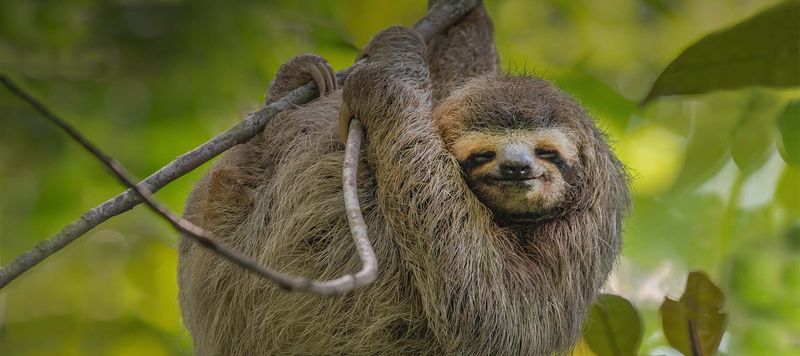
Sloths, the masters of leisurely living, embody the art of taking life slow. Found in the treetops of South America’s rainforests, these creatures move with deliberate grace. Their slow pace is an adaptation to a low-energy diet of leaves.
With their endearing smiles and unhurried lifestyle, sloths have captured the hearts of many. They play a vital role in their environment by promoting plant growth through their feeding habits.
Despite their sluggish demeanor, sloths are surprisingly adept swimmers. Their presence is a gentle reminder that life in the fast lane isn’t always best.
Anaconda
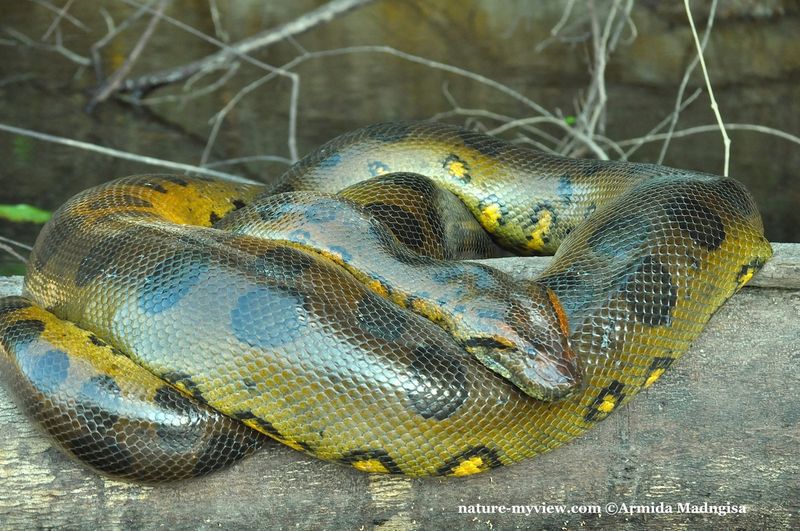
In the murky waters of the Amazon, the anaconda reigns supreme. This massive serpent, one of the largest snakes in the world, inspires both awe and fear. Their size and strength are legendary, capable of subduing large prey with ease.
Anacondas are essential to the aquatic ecosystems, controlling the populations of their prey. Despite their formidable reputation, they are elusive and prefer to avoid human contact.
Observing an anaconda in its natural habitat is a thrilling experience, a reminder of the jungle’s untamed spirit. These serpents are nature’s silent giants, powerful yet enigmatic.
Piranha
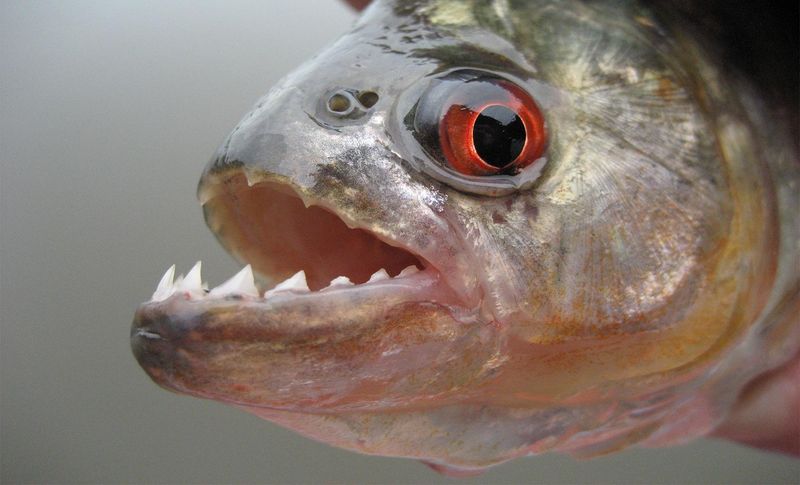
Few fish inspire as much intrigue as the piranha. Found in the rivers of South America, these notorious fish are known for their sharp teeth and feeding frenzies. Yet, they are more than just predators; they play a crucial role in their ecosystem.
Piranhas help maintain the balance of aquatic life by controlling fish populations. Despite their fearsome reputation, they are not the mindless killers often portrayed.
In fact, many species of piranhas are omnivorous and pose little threat to humans. These fascinating creatures remind us that nature is nuanced and full of surprises.
Giant Anteater
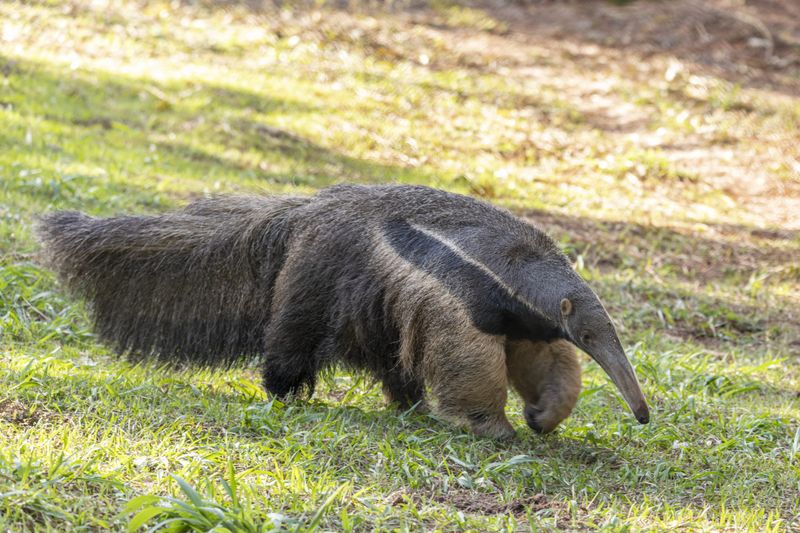
The giant anteater, with its elongated snout and bushy tail, is a unique marvel of the animal kingdom. Found roaming the savannas and forests, this insectivore specializes in dining on ants and termites.
Its long tongue can extend up to two feet, perfect for extracting its prey. Giant anteaters play a significant role in controlling insect populations, making them vital to their ecosystems.
Their distinctive appearance and feeding habits have captured the curiosity of many. Observing a giant anteater in the wild is a lesson in adaptation, showcasing nature’s ingenuity.
Amazon River Dolphin
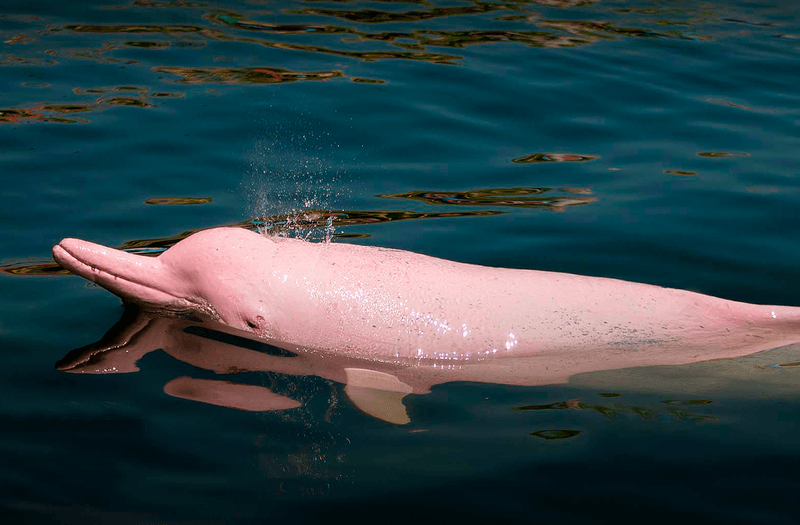
With a blush of pink and a playful demeanor, the Amazon river dolphin is a freshwater jewel. These dolphins, also known as botos, are intelligent and sociable, often seen frolicking in the waters of the Amazon.
Their unique pink coloration and flexible necks set them apart from their marine cousins. Amazon river dolphins are crucial for the river’s ecological health, helping to maintain the balance of fish populations.
Their presence is a reminder of the rich biodiversity that thrives beneath the surface. Encountering a boto is to witness the whimsy of the natural world.
Harpy Eagle
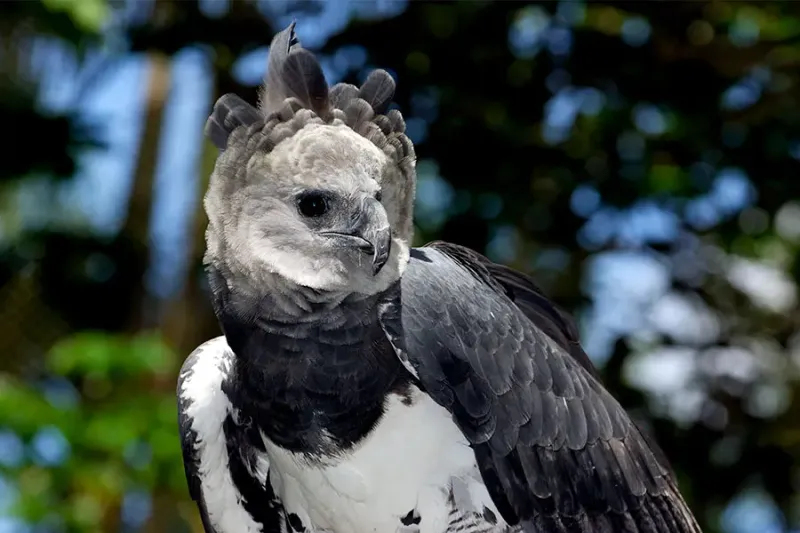
The harpy eagle, with its imposing stature and fierce gaze, reigns as one of the world’s most powerful birds of prey. Found in the rainforests, this eagle is a symbol of strength and majesty.
With talons that rival the size of a grizzly bear’s claws, harpy eagles hunt monkeys and sloths with precision. They are vital for maintaining the balance of their habitats.
Observing a harpy eagle in flight is a sight to behold, a demonstration of nature’s raw power. These apex predators are a testament to the untamed beauty of South America.
Llama
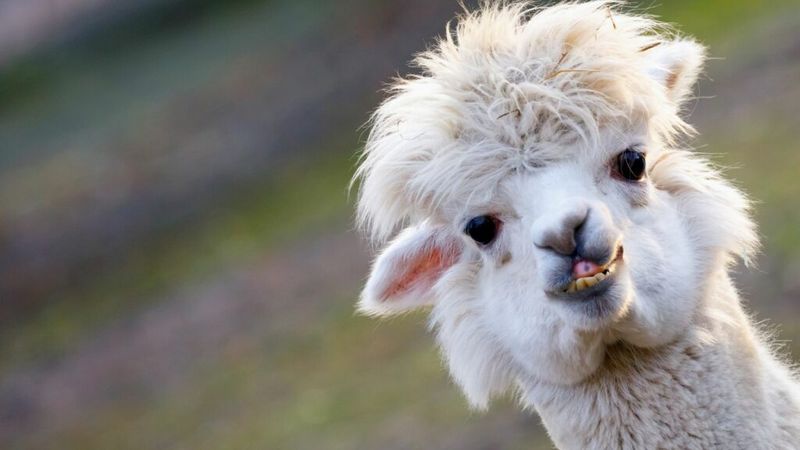
In the high plains of the Andes, llamas are a familiar and endearing sight. Known for their gentle demeanor and woolly coats, they have been companions to humans for centuries.
These animals are not only beloved pets but also vital resources for Andean communities. Llamas are used for their wool and as pack animals, capable of traversing the rugged mountainous terrain.
Their presence is woven into the cultural fabric of the region. With their curious expressions and soft humming sounds, llamas add a touch of charm to the harsh landscapes they inhabit.
Spectacled Bear
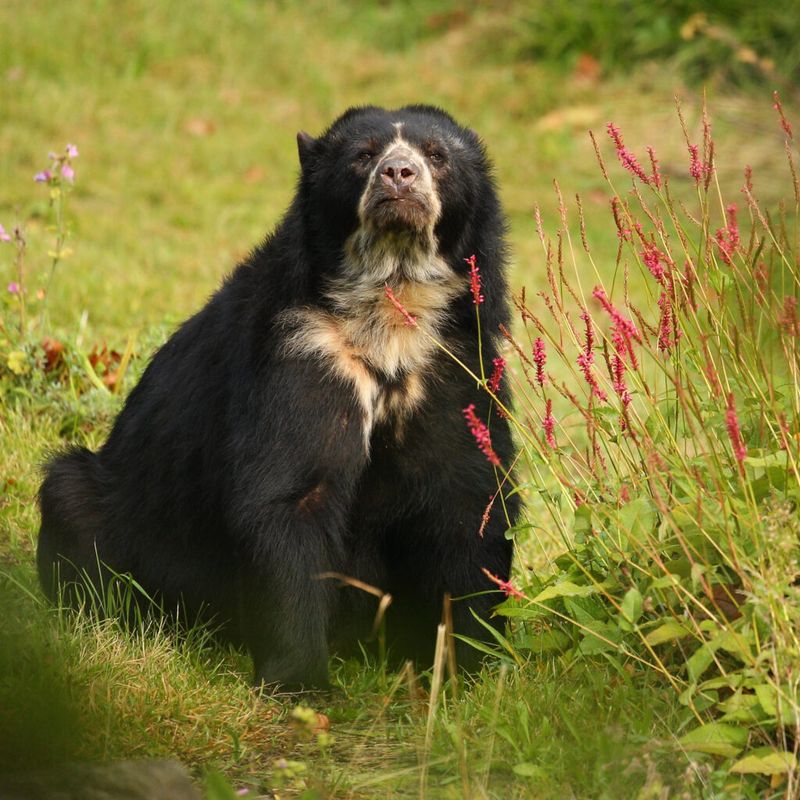
With its unique facial markings, the spectacled bear stands out as the only bear species native to South America. Found in the Andean cloud forests, these bears are elusive and largely herbivorous.
Spectacled bears play a vital role in seed dispersal, aiding in forest regeneration. Their presence is a sign of a healthy ecosystem. Despite their shy nature, they have captured the imagination of many with their endearing appearances.
These bears remind us of the hidden mysteries of the forest, a world where nature thrives in balance and harmony.
Emperor Tamarin
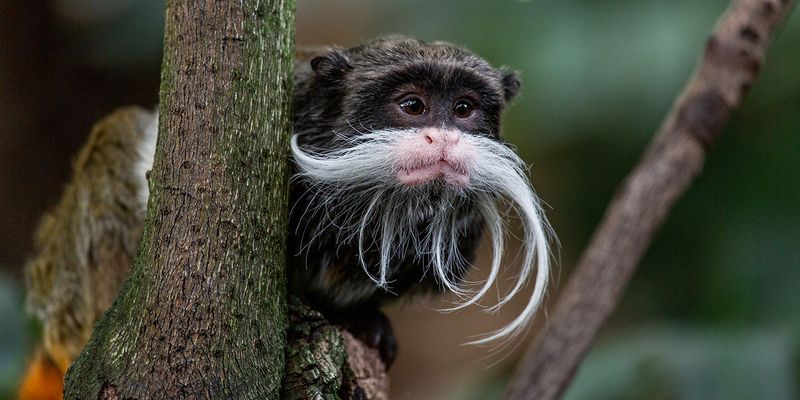
With a mustache that would make any monarch proud, the emperor tamarin is a small primate with big personality. Found in the tropical forests, these tamarins are social creatures, living in groups.
Their expressive faces and playful antics make them a favorite among wildlife enthusiasts. Emperor tamarins play a crucial role in their ecosystems, helping to disperse seeds and maintain plant diversity.
Their presence adds a touch of whimsy to the forests. Observing them in their natural habitat is a delightful experience, a glimpse into the intricate tapestry of life.
Pudu
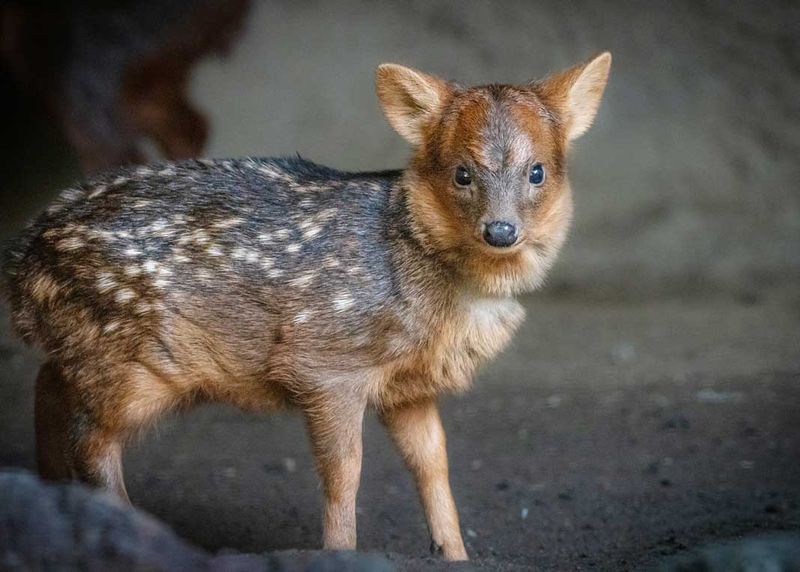
Meet the pudu, the world’s smallest deer, a gentle creature that roams the southern forests. With their petite stature and delicate antlers, pudus are masters of navigating dense underbrush.
These shy animals are elusive, often hiding from view, but their presence is vital for the forest’s health as seed dispersers. Despite their size, pudus are surprisingly resilient, adapting to various environmental pressures.
Their charming appearances and secretive lives add an element of mystery to the forests they inhabit. Pudus are a testament to the delicate beauty of nature’s creations.
Maned Wolf
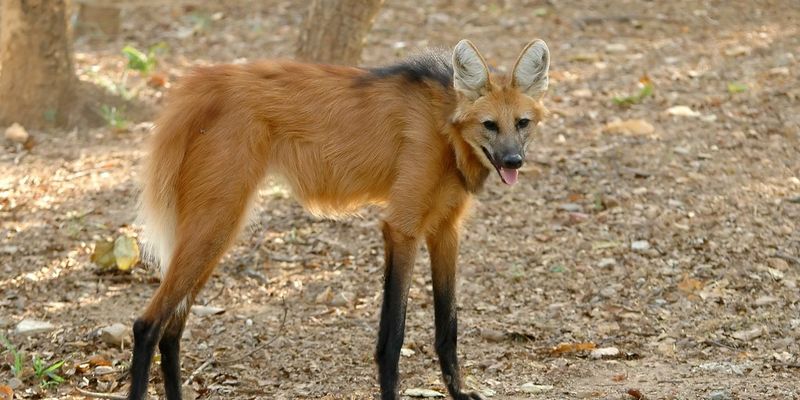
Tall and enigmatic, the maned wolf is neither a fox nor a true wolf, but a unique species of its own. Found in the grasslands, their long legs and striking appearance have earned them the nickname ‘fox on stilts.’
Maned wolves play a critical role in their ecosystem by controlling rodent populations. Despite their wild looks, they are shy and avoid human contact. Their haunting calls echo across the plains, adding an eerie charm to the landscape.
Maned wolves are a reminder of the diverse and often mysterious wildlife that roams the continent.
Baird’s Tapir
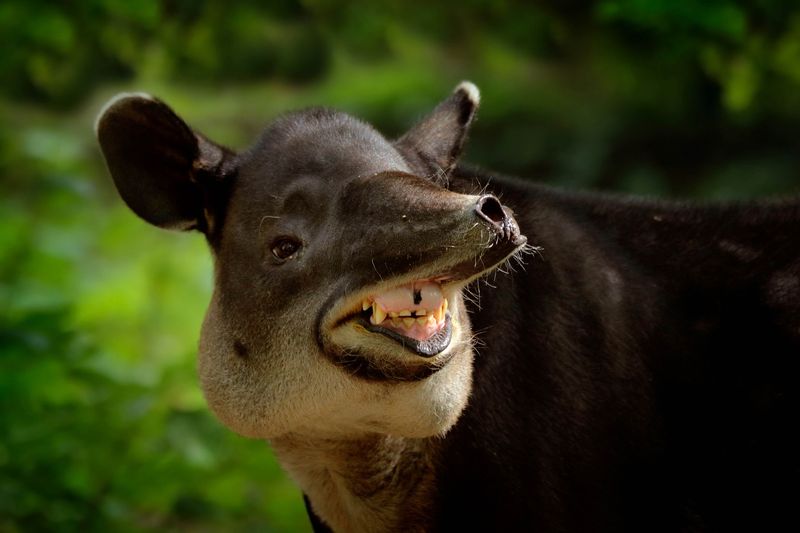
With their distinctive prehensile snouts, Baird’s tapirs are intriguing residents of the forests. These gentle giants are vital ecosystem engineers, shaping their environments through seed dispersal.
Baird’s tapirs are often found near water, where they graze on leaves and fruit. Their calm demeanor and unique adaptations make them fascinating subjects of study.
Despite their size, they move quietly through the underbrush, leaving subtle footprints in their wake. Tapirs are a living connection to the prehistoric past, embodying the timeless dance of nature’s evolution.
Mara
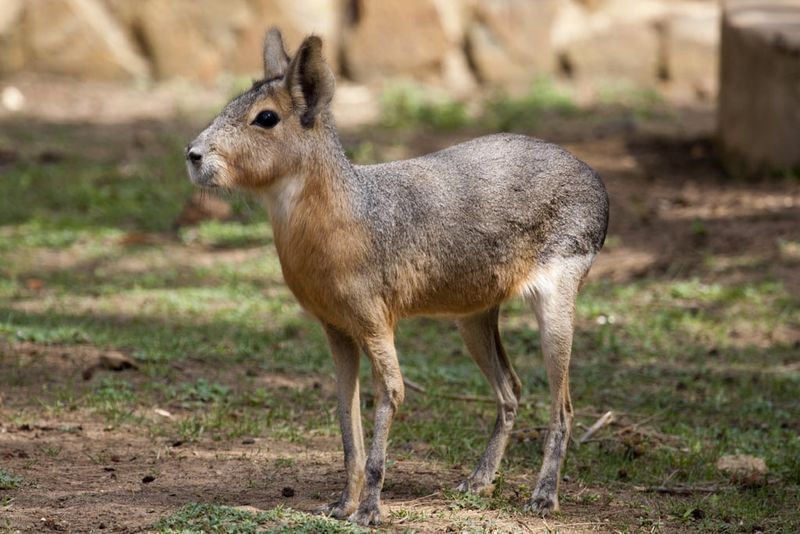
The mara, sometimes called the Patagonian cavy, is a rodent that resembles a small deer. Found in the open scrublands, these animals are known for their swift movements and large, expressive ears.
Maras live in pairs, forming strong bonds that last a lifetime. Their presence is important for the ecosystem, as they help control vegetation through grazing. Despite their rabbit-like appearance, maras have a unique niche in the animal kingdom.
Observing them in the wild is a glimpse into the adaptability and resilience of nature’s creations.
Vicuna
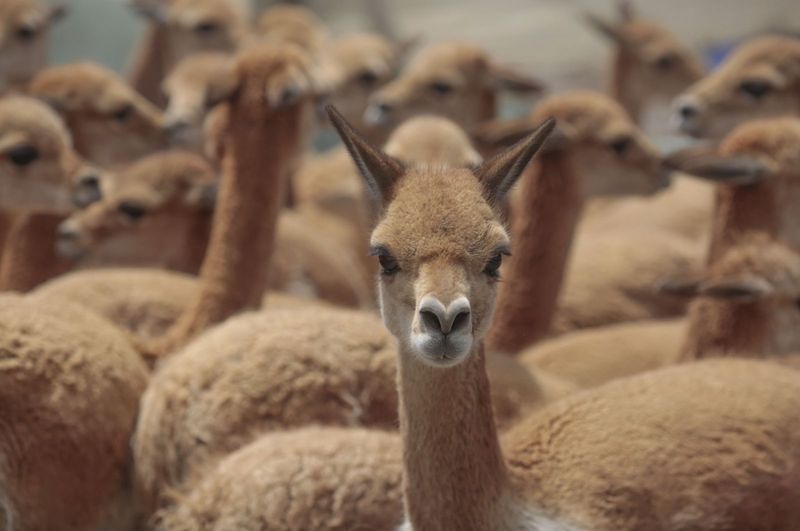
High in the Andes, the vicuna roams with grace and elegance. Known for their incredibly soft wool, these relatives of the llama have adapted to the harsh mountainous environment.
Vicunas live in family groups, and their wool is highly prized, providing economic benefits to local communities. Despite their delicate appearance, they are resilient creatures, capable of enduring extreme cold and altitude.
Their presence is a testament to the beauty that thrives in even the most unforgiving landscapes. Vicunas are nature’s jewels, shimmering against the rugged backdrop of the Andes.
Glass Frog
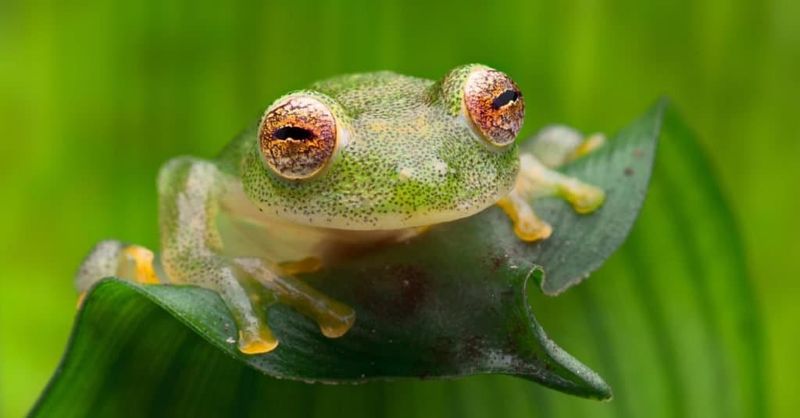
In the heart of the Amazon rainforest resides the enigmatic Glass Frog, a master of disguise in the jungle canopy. Its translucent skin offers a unique glimpse into its anatomy, a feature that mesmerizes and intrigues.
With a light, almost ethereal presence, these frogs often remain undiscovered, blending effortlessly with the verdant surroundings. Their ability to almost vanish amidst the foliage is a testament to their evolutionary finesse.
Did you know? The Glass Frog’s transparent belly allows predators to see straight through them, a fascinating adaptation to avoid predation. This remarkable feature makes them one of nature’s most intriguing spectacles.

